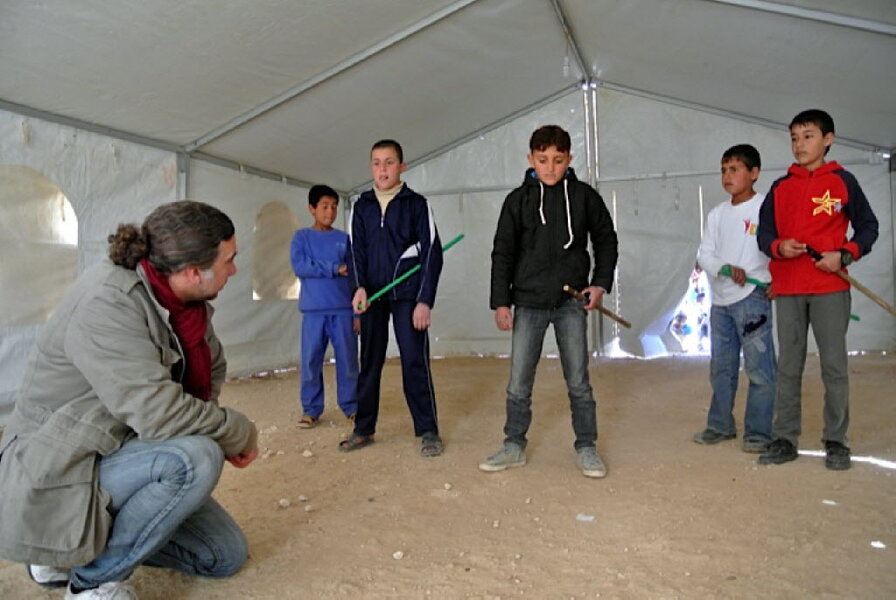When artists are on the frontlines – of peace
Loading...
After seven decades of separation and frequent conflicts, the people of North and South Korea have grown so far apart that many observers say they can never reunite. Kang Chun-hyok, a well-known hip hop artist, thinks otherwise. A defector from North Korea who now lives in Seoul, he writes songs that show the common bonds of Koreans. His latest rap single, “For the Freedom,” is the kind of artistic expression he hopes will prepare Koreans for reunification – despite the current saber-rattling around the divided peninsula.
Artists by nature try to imagine alternative realities and different futures. Some simply mock or belittle. Yet many can also be peace builders for countries in conflict or societies ruptured by harmful differences. Their works, from plays to paintings, offer aesthetic experiences that may increase understanding, create a shared identity, or heal trauma. While artists may seem marginal in today’s geopolitics, they offer the potential to create a receptivity in people to feel the experiences of those they dislike or to see a common light in others.
Often such art simply helps the performers themselves. In many of the Middle East camps for Syrian refugees, aid workers put on plays to heal the wounds of war. In Colombia, the central bank sponsors cultural events that bring people together as the country starts the process of ending a long civil war between the government and rebels. “To build a country in peace, we also need words to name that reality and images to imagine,” state the sponsors of the initiative, which is called “Let peace speak up.”
It is public art that can sometimes be the most visible and effective peacebuilder. The Vietnam War Memorial in Washington has changed forever how many Americans feel about that conflict. The bronze statue of the “Fearless Girl,” which faces the giant bronze bull on New York’s Wall Street, has led to a positive dialogue about women, power, and capitalism. In Italy last year, 18-year-olds began to be paid to go to museums in hopes the cultural experience would enrich the social fabric of a country with many new immigrants.
The best in art-as-peacemaking includes the antagonists themselves. Recently actors from Serbia and Albania, two countries still at odds after a conflict in the 1990s, put on a production of Shakespeare’s “Romeo and Juliet.” In Lebanon, a country divided by multiple religions, a group called March premiered a play last week called “This is Beirut.” It shows 18 young people trying to overcome their sectarian prejudices.
What gives art a special place in reconciliation? Katherine Wood, arts adviser at the United States Institute of Peace in Washington, put it this way in a 2015 report: “In peacebuilding initiatives, the arts and cultural practices aim to embody a kind of power that rests not on injury or domination, but rather on reciprocity, connectivity, and generativity.” Art can break down stereotypes and barriers of mistrust, she adds. It helps oppressed communities restore their dignity.
If any place seems far from that type of peacemaking, it is the Korean peninsula. Artists like Mr. Kang are not very visible amid the news of possible war. Yet it is their soft power that sometimes wins in the end.







